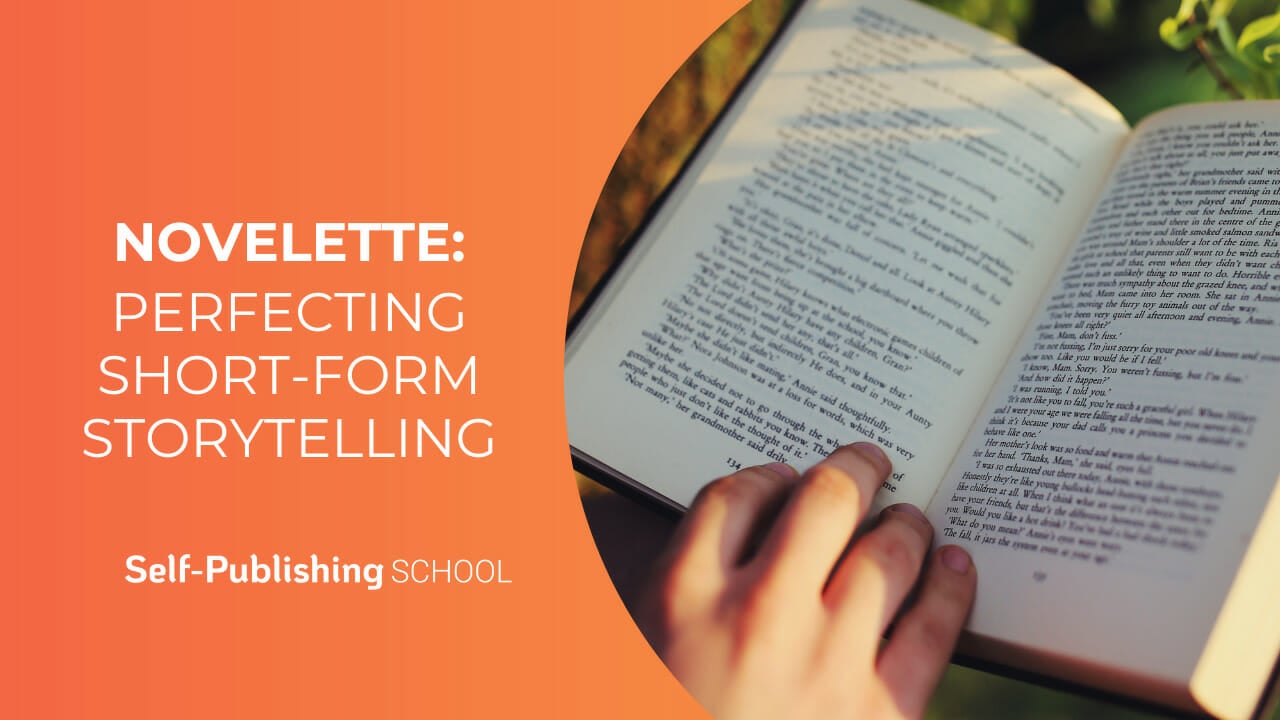A novelette is a silly little guy that muscled its way in to sit between a short story and a novel. As my questionable philosophy professor used to tell us about essay length, novelettes should be like a skirt: Long enough to cover the important bits, but short enough to keep our interest.
Table of Contents
What is a novelette?
A novelette is a term used to describe a work of fiction that falls somewhere between a short story and a novella in terms of length. While there is no strict word count defining a novelette, it typically ranges from around 7,500 to 20,000 words. Novelettes allow authors to explore more complex storylines and character development than what can be achieved in a short story, while still maintaining a concise narrative structure.
Novelettes often focus on a single plot or theme and may feature more detailed descriptions and characterizations than shorter works. They provide enough room for the author to delve into the nuances of the story, but they are shorter and more compact compared to novellas or full-length novels.
The classification of a work as a novelette is not always set in stone, as different publishers and literary organizations may have slightly different classifications for story length. However, the term “novelette” is generally understood to refer to a work of fiction that is shorter than a novella, but longer than a short story.

How to write a novelette step-by-step
The process of writing a novelette will fall somewhere between writing a novel and writing a short story. You still need those rich character arcs, a compelling plot, and a deeper purpose, but you are limited on the space in which you can accomplish those things.
Here are some steps you might consider taking:
1. Idea generation
All good projects start with a brainstorm! Consider themes, characters, settings, plot concepts, imagery, lines of dialogue, and anything else that intrigues you. Brain dump everything you know about the idea so far, then expand on each of those points to see if any particular element shoots you into the right direction.
2. Outline
Many writers hate outlining, and I think that might be because an outline forces you to confront the issues with your story right away. You might get away writing ten or twenty thousand words of a discovery draft before you discover a problem that could have been uncovered and addressed in an outline, weeks or months before. An outline is just a mini version of your story!
Your story outline should include major events and plot points, character arcs, and the overall shape of your story. You might do a scene-by-scene outline, or maybe just a bulleted list of the plot points. An outline can be an incredibly helpful writing tool, no matter what format you choose.
3. Character development
Characters are what drive a story, so take the time to develop your characters and their backstories, personalities, motivations, strengths and weaknesses, as well as their relationships with each other.
4. Setting
The setting of a novelette can have a huge effect on the story. Determine the best geographical location, time of year, time of day, etc., for your story to take place. Establish a vivid, immersive environment that can both complement the story and challenge the characters.
5. Write the story
With your outline, characters, and setting already developed, writing a first draft should be a breeze. It’s important to be intentional with these elements in short pieces, because it’s simply more difficult to nail a narrative with limited space.
These steps are a general guide that can help you stay focused through the project, but they can really be done in any order, and a discovery draft really isn’t the worst idea in the world! Tell your story your way.
Novelette vs novella
The terms “novelette” and “novella” are often used to describe works of fiction that are shorter than a full-length novel but longer than a short story. While there is some overlap in their definitions, there are subtle differences between the two.
Novelette
A novelette is typically shorter than a novella and falls within the range of approximately 7,500 to 20,000 words. It allows for more depth and complexity in storytelling than a short story but is still relatively concise. Novelettes often focus on a single plot or theme and may explore characters and settings in greater detail than a short story. They are often published as standalone works or as part of a collection of shorter fiction.
Novella
A novella is longer than a novelette, ranging from around 20,000 to 50,000 words, although the exact word count can vary depending on different sources and publishers. Novellas have more room for character development, world-building, and intricate plotlines compared to both short stories and novelettes. They allow authors to explore themes and ideas in greater depth while maintaining a tighter focus than a full-length novel. Novellas can be published individually or as part of a collection, and they often provide a satisfying and complete narrative arc.
While the distinction between a novelette and a novella can be subjective and may vary depending on publishing conventions, novellas generally tend to be longer and more expansive than novelettes, offering a richer reading experience with more developed storylines and characters.
Novelette vs novel
The primary difference between a novelette and a novel lies in their respective lengths and the scope of storytelling.
Novelette
A novelette is a work of fiction that falls between a short story and a novel in terms of length. It typically ranges from around 7,500 to 20,000 words, although the word count can vary depending on different definitions and publishers. Novelettes allow for more depth and complexity than a short story but are still relatively concise. They often focus on a single plot or theme and may explore characters and settings in greater detail. Novelettes provide a compact narrative structure and are often published as standalone works or as part of a collection of shorter fiction.
Novel
A novel is a significantly longer work of fiction, typically over 50,000 words, although there is no strict word count defining a novel. Novels provide the most extensive form of storytelling, allowing authors to explore intricate plots, multifaceted characters, and detailed world-building. Novels have more room for subplots, multiple character arcs, and thematic exploration. They can encompass a wide range of genres, styles, and themes, and they offer readers a comprehensive and immersive reading experience. Novels are typically published as standalone works and are the most common form of long-form fiction.
While both novelettes and novels are works of fiction, the key distinction lies in their length and the scope of storytelling. Novelettes are shorter, more focused narratives falling between short stories and novels, whereas novels are longer, expansive works that allow for more extensive exploration of characters, plots, and themes.
Novelette vs short story
The main difference between a novelette and a short story lies in their respective lengths and the complexity of the narratives.
Novelette
A novelette is longer than a short story but shorter than a novella or novel. It typically ranges from approximately 7,500 to 20,000 words, although there is some flexibility in the word count. Novelettes provide authors with more space to develop characters, explore themes, and create more intricate plotlines compared to short stories. They often focus on a single plot or theme and may delve into details such as character motivations, settings, and relationships in more depth. Novelettes can be standalone works or part of a collection of shorter fiction.
Short Story
A short story is a brief work of fiction that emphasizes brevity and concise storytelling. It is typically shorter than a novelette, ranging from a few hundred to 10,000 words, although the exact word count can vary. Short stories aim to convey a complete narrative or explore a single theme within a limited space. Due to their brevity, short stories often focus on a single event, character, or idea, and they may leave certain aspects open to interpretation. They require the author to create a strong impact in a condensed form, often relying on economy of language and concise storytelling techniques.
While both novelettes and short stories are shorter works of fiction, the key difference lies in their lengths and narrative complexities. Novelettes are longer and allow for more detailed exploration of characters and plotlines, while short stories are briefer and emphasize concise storytelling to convey a complete narrative or theme.
A novelette occupies a unique space in the realm of fiction, serving as a bridge between short stories and longer works like novellas or novels. Crafting a compelling novelette involves careful planning and execution. The journey of writing a novelette requires dedication, revision, and an appreciation for the art of storytelling. So, whether you embark on writing a novelette for personal enjoyment or publication, embrace the challenge and let your imagination flourish within the boundaries of this goofy little literary form.
